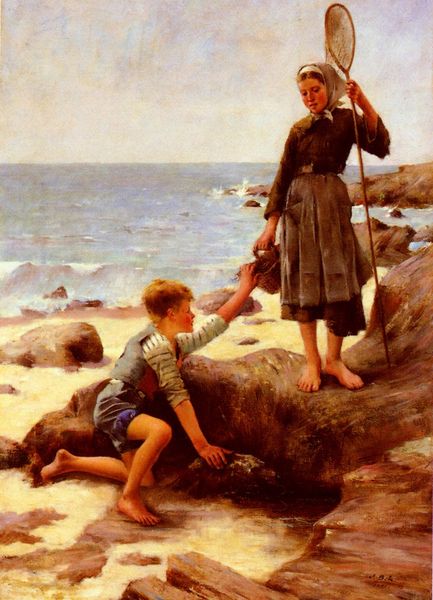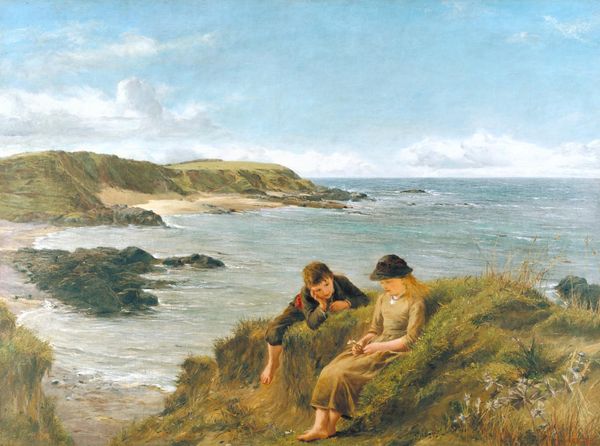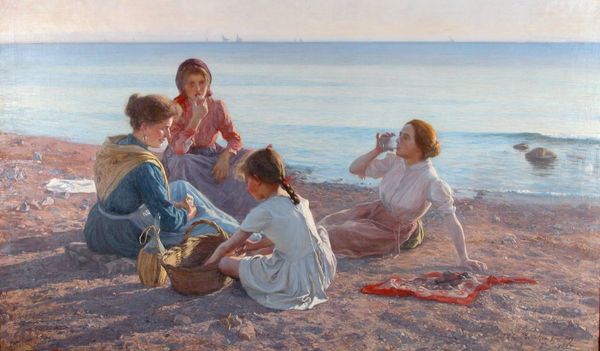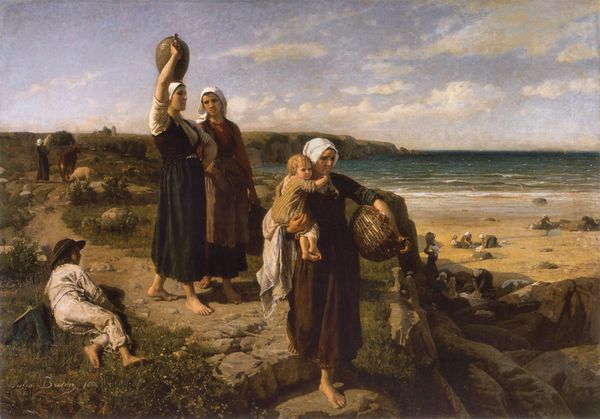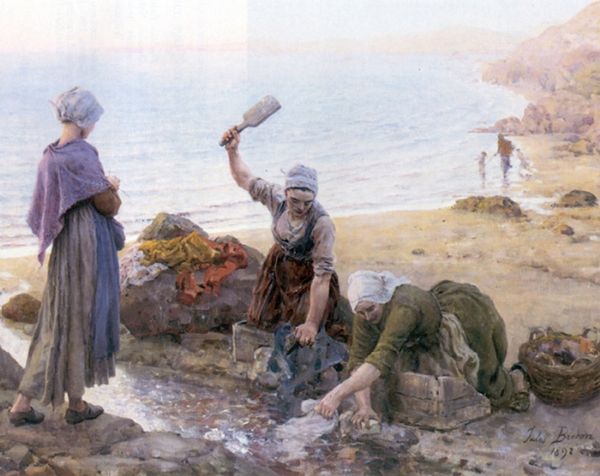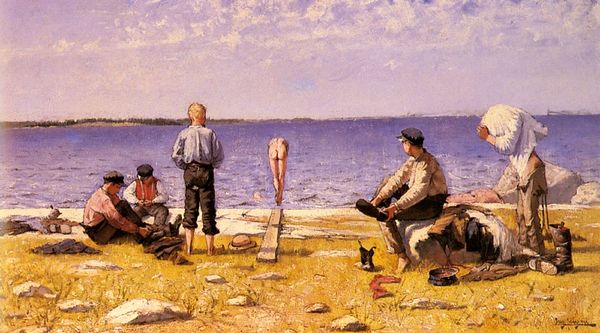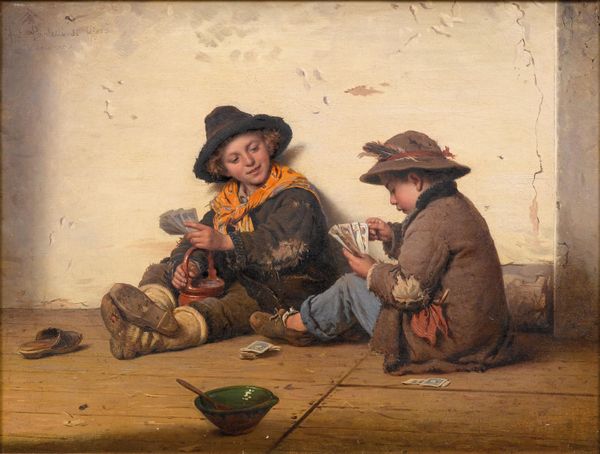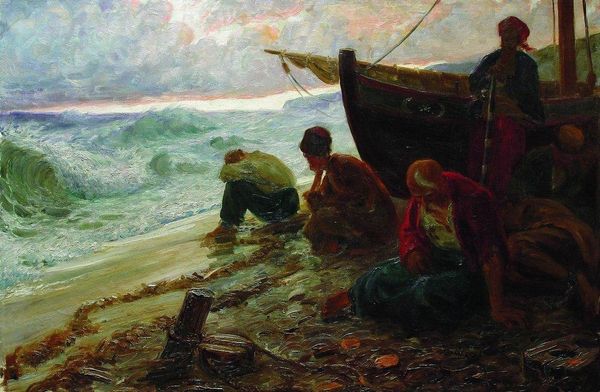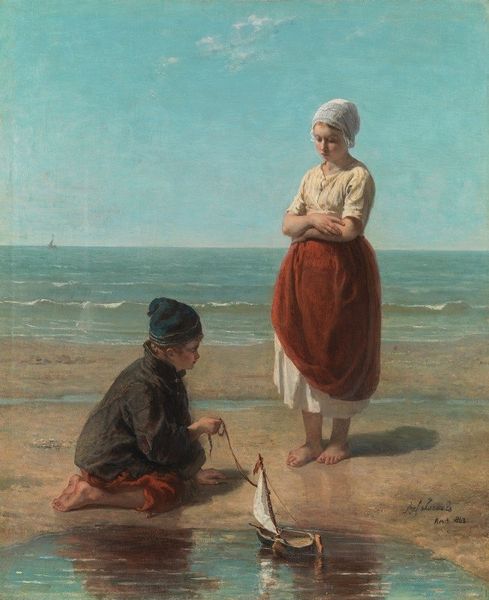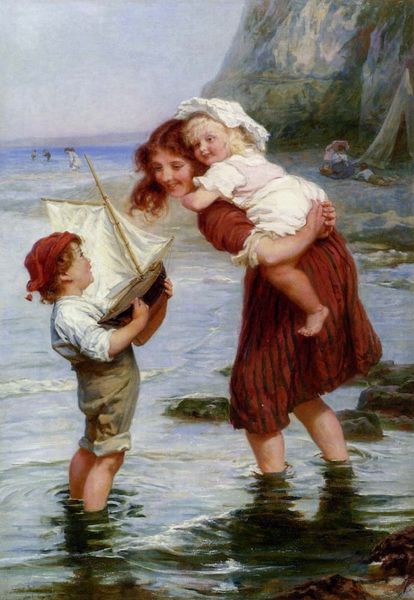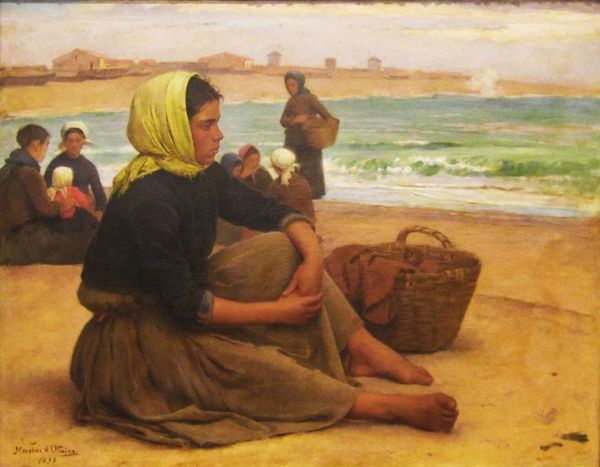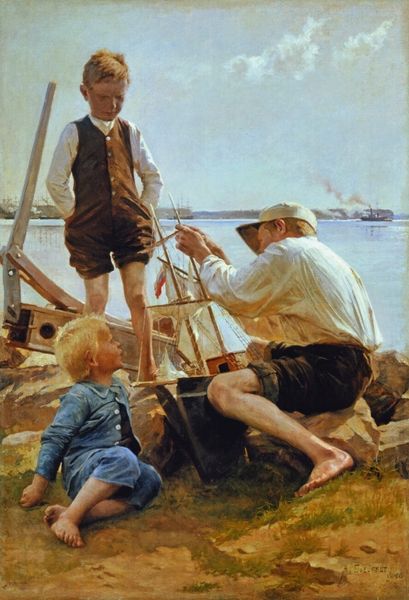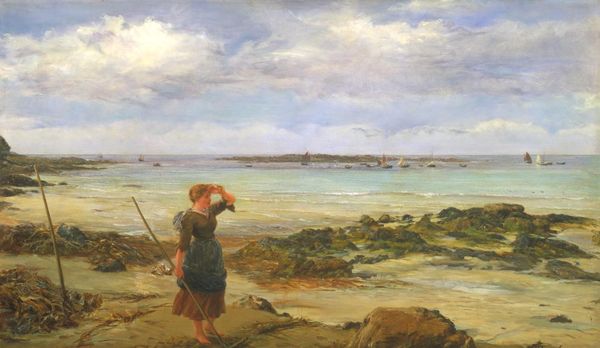
The Boyhood of Raleigh 1870
0:00
0:00
sirjohneverettmillais
Tate Modern, London, UK, Tate Britain, London, UK
Dimensions: 142.24 x 120.65 cm
Copyright: Public domain
Curator: Looking at this painting, I'm immediately drawn in by its theatrical quality. The way the light falls on the faces of the boys creates this feeling of heightened anticipation, like a story is about to unfold. Editor: Indeed! What we have here is “The Boyhood of Raleigh,” a captivating oil painting created around 1870 by Sir John Everett Millais. It’s exemplary of the Pre-Raphaelite movement’s dedication to narrative and historical themes, but also demonstrates a kind of carefully constructed performance of boyhood and British identity. Curator: That’s fascinating. Millais stages Raleigh’s future by presenting him as an attentive listener, rapt by tales of adventure on the high seas. I’m curious, how does the positioning of Raleigh alongside this older storyteller inform or solidify notions of national heroism in a way that privileges white masculinity and exploration? Editor: It is about creating an origin myth, linking English identity inextricably with naval prowess and imperial ambition. By placing Raleigh within this historical narrative, Millais validates and perpetuates a specific worldview, glossing over the violence inherent in colonization, for example. It presents England’s expansionist agenda as inherently heroic, overlooking any interrogation of whose interests such endeavors ultimately serve, let alone the immense consequences felt by the colonized. The narrative art celebrates specific versions of "greatness" to the exclusion of so many other possibilities. Curator: Absolutely. Even the props, like the discarded model ship and exotic basket, signal the world of opportunity that is being narrated into existence for Raleigh. What really strikes me is how this sea tale functions like a blueprint of the self- how stories, and crucially who tells them, impact how individuals see themselves. Editor: Precisely. And who are they telling this story to, but future generations who will walk through museums and encounter the mythology constructed in works like these, subtly encouraging particular visions of leadership and national identity. What can this historical painting say to audiences today? What do they make of its complex interplay of youthful ambition and potential imperial damage? Curator: Perhaps recognizing these power dynamics allows us to reimagine history, decentering figures like Raleigh in favor of creating space for other narratives that acknowledge how gender, race, and historical context shapes individual experiences and larger geopolitical structures. Editor: Precisely. Only by critically engaging with these complex layers of context can we begin to reckon with our inheritances.
Comments
No comments
Be the first to comment and join the conversation on the ultimate creative platform.
